 |
 |
Our enthusiastic and extremely knowledgeable perennials team is here to answer your questions and help you choose the best perennials for your situation. There’s always something in bloom for sun, shade, butterflies, birds or deer resistance as well as a variety of bulbs for your space.
Stroll through our time-tested favorites and introduce yourself to the newest varieties. We garden with perennials too; we love them and it shows!
|
37 found, showing page 2 of 3

Height: 16 inches
Spread: 16 inches
Sunlight: full sun, partial shade, full shade
Hardiness Zone: 4b
Other Names: C. hachijoensis
Group/Class: EverColor Series
Description:
A vigorous, mound forming evergreen plant with striking deep green foliage, edged in silvery white; makes quite a statement as a container planting or as an accent in the border or as a mass groundcover
Ornamental Features:
EverColor Everest Japanese Sedge is primarily valued in the garden for its cascading habit of growth. Its attractive grassy leaves are dark green in color with distinctive white edges. The foliage often turns brown in fall.
Landscape Attributes:
EverColor Everest Japanese Sedge is an herbaceous evergreen perennial grass with a shapely form and gracefully arching stems. It brings an extremely fine and delicate texture to the garden composition and should be used to full effect.
This is a relatively low maintenance plant, and is best cleaned up in early spring before it resumes active growth for the season. It has no significant negative characteristics.
EverColor Everest Japanese Sedge is recommended for the following landscape applications:
- Mass Planting
- Border Edging
- General Garden Use
- Groundcover
- Naturalizing And Woodland Gardens
- Container Planting
Planting & Growing:
EverColor Everest Japanese Sedge will grow to be about 16 inches tall at maturity, with a spread of 16 inches. Its foliage tends to remain dense right to the ground, not requiring facer plants in front. It grows at a medium rate, and under ideal conditions can be expected to live for approximately 10 years. As an evegreen perennial, this plant will typically keep its form and foliage year-round.
This plant performs well in both full sun and full shade. It prefers to grow in average to moist conditions, and shouldn't be allowed to dry out. It is not particular as to soil type or pH. It is somewhat tolerant of urban pollution. Consider applying a thick mulch around the root zone in both summer and winter to conserve soil moisture and protect it in exposed locations or colder microclimates. This is a selected variety of a species not originally from North America. It can be propagated by division; however, as a cultivated variety, be aware that it may be subject to certain restrictions or prohibitions on propagation.
EverColor Everest Japanese Sedge is a fine choice for the garden, but it is also a good selection for planting in outdoor pots and containers. It is often used as a 'filler' in the 'spiller-thriller-filler' container combination, providing a canvas of foliage against which the thriller plants stand out. Note that when growing plants in outdoor containers and baskets, they may require more frequent waterings than they would in the yard or garden.
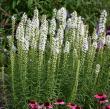
Fluffy, white flowers attract pollinators. Upright, strong stalks. USDA 3-9
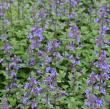
Dark blue blooms. Dwarf. Fragrant mounding foliage. USDA 3-8
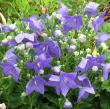
Flower buds puff up like balloons before bursting open into blue bell-shaped flowers. Compact. USDA 3-9
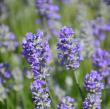
Fragrant purple blooms. Uniformly mounding. Compact. MUST have good drainage. USDA 5-8
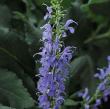
Blue blooms. Fragrant foliage. Upright. Clumping. USDA 4-8
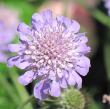
Lavender blooms. Long blooming. Compact. Clump-forming. USDA 5-9
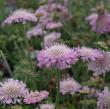
Pale-pink blooms. Long blooming. Compact. Clump-forming. USDA 5-9
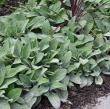
Silvery green foliage. Flowering stems are rare. USDA 4-9
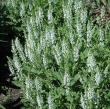
Showy white blooms. Fragrant foliage. Tolerates deer & drought. USDA 4-8
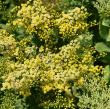
Yellow blooms. Upright foliage. Compact habit. Clump-Forming. USDA 5-8
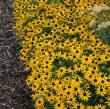
Height: 18 inches
Spacing: 14 inches
Sunlight: full sun
Hardiness Zone: 3a
Other Names: Orange Coneflower, Black Eyed Susan
Description:
A more compact and floriferous variety, ideal for small gardens and containers; beautiful flowers of gold fill the plant through summer and early fall, a wonderful fall perennial
Ornamental Features:
Little Goldstar Coneflower has masses of beautiful gold daisy flowers with dark brown eyes at the ends of the stems from mid summer to early fall, which are most effective when planted in groupings. The flowers are excellent for cutting. Its pointy leaves remain dark green in color throughout the season.
Landscape Attributes:
Little Goldstar Coneflower is an herbaceous perennial with an upright spreading habit of growth. Its medium texture blends into the garden, but can always be balanced by a couple of finer or coarser plants for an effective composition.
This is a relatively low maintenance plant, and should be cut back in late fall in preparation for winter. It is a good choice for attracting butterflies to your yard, but is not particularly attractive to deer who tend to leave it alone in favor of tastier treats. It has no significant negative characteristics.
Little Goldstar Coneflower is recommended for the following landscape applications:
- Mass Planting
- General Garden Use
- Container Planting
Planting & Growing:
Little Goldstar Coneflower will grow to be about 14 inches tall at maturity, with a spread of 18 inches. When grown in masses or used as a bedding plant, individual plants should be spaced approximately 14 inches apart. It grows at a fast rate, and under ideal conditions can be expected to live for approximately 15 years. As an herbaceous perennial, this plant will usually die back to the crown each winter, and will regrow from the base each spring. Be careful not to disturb the crown in late winter when it may not be readily seen!
This plant should only be grown in full sunlight. It prefers to grow in average to moist conditions, and shouldn't be allowed to dry out. It is not particular as to soil type or pH. It is highly tolerant of urban pollution and will even thrive in inner city environments. This is a selection of a native North American species. It can be propagated by division; however, as a cultivated variety, be aware that it may be subject to certain restrictions or prohibitions on propagation.
Little Goldstar Coneflower is a fine choice for the garden, but it is also a good selection for planting in outdoor pots and containers. It is often used as a 'filler' in the 'spiller-thriller-filler' container combination, providing a mass of flowers against which the larger thriller plants stand out. Note that when growing plants in outdoor containers and baskets, they may require more frequent waterings than they would in the yard or garden.
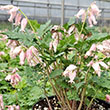
Cherry red heart shaped blooms. Grayish-green foliage. USDA 3-9
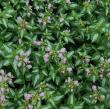
Pink blooms. Green leaves have white diamond. Groundcover. USDA 3-8

Plant Height: 12 inches
Flower Height: 24 inches
Spacing: 10 inches
Sunlight: full sun, partial shade, full shade
Hardiness Zone: 3b
Other Names: Coralbells, Alumroot
Description:
Low growing mounds of deep purple-bronze foliage offset tiny spikes of creamy white flowers in the early summer months; adds contrast and color to borders, beds, rock and woodland gardens; low maintenance and easy to grow
Ornamental Features:
Palace Purple Coral Bells features dainty spikes of creamy white bell-shaped flowers rising above the foliage from late spring to mid summer. Its attractive crinkled lobed leaves remain deep purple in color with curious burgundy undersides and tinges of dark green throughout the year.
Landscape Attributes:
Palace Purple Coral Bells is a dense herbaceous evergreen perennial with tall flower stalks held atop a low mound of foliage. Its relatively fine texture sets it apart from other garden plants with less refined foliage.
This is a relatively low maintenance plant, and should be cut back in late fall in preparation for winter. It is a good choice for attracting hummingbirds to your yard. It has no significant negative characteristics.
Palace Purple Coral Bells is recommended for the following landscape applications:
- Mass Planting
- Rock/Alpine Gardens
- Border Edging
- General Garden Use
- Groundcover
Container Planting
- Planting & Growing
Palace Purple Coral Bells will grow to be about 12 inches tall at maturity extending to 24 inches tall with the flowers, with a spread of 12 inches. When grown in masses or used as a bedding plant, individual plants should be spaced approximately 10 inches apart. Its foliage tends to remain dense right to the ground, not requiring facer plants in front. It grows at a medium rate, and under ideal conditions can be expected to live for approximately 10 years. As an evegreen perennial, this plant will typically keep its form and foliage year-round.
This plant performs well in both full sun and full shade. However, you may want to keep it away from hot, dry locations that receive direct afternoon sun or which get reflected sunlight, such as against the south side of a white wall. It prefers to grow in average to moist conditions, and shouldn't be allowed to dry out. It is not particular as to soil type or pH. It is somewhat tolerant of urban pollution. Consider applying a thick mulch around the root zone in winter to protect it in exposed locations or colder microclimates. This is a selection of a native North American species. It can be propagated by division; however, as a cultivated variety, be aware that it may be subject to certain restrictions or prohibitions on propagation.
Palace Purple Coral Bells is a fine choice for the garden, but it is also a good selection for planting in outdoor pots and containers. With its upright habit of growth, it is best suited for use as a 'thriller' in the 'spiller-thriller-filler' container combination; plant it near the center of the pot, surrounded by smaller plants and those that spill over the edges. Note that when growing plants in outdoor containers and baskets, they may require more frequent waterings than they would in the yard or garden.
37 found, showing page 2 of 3



